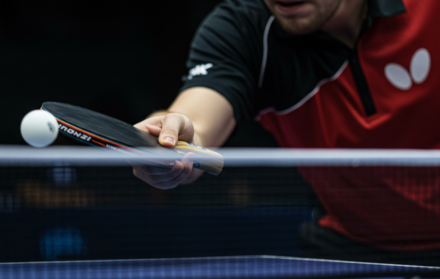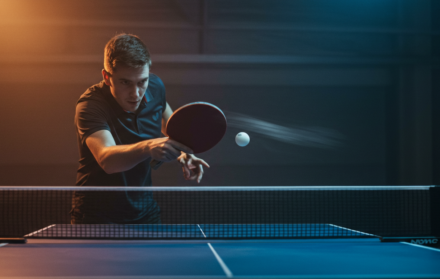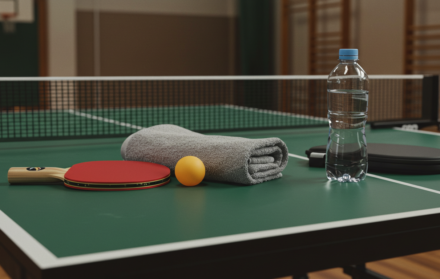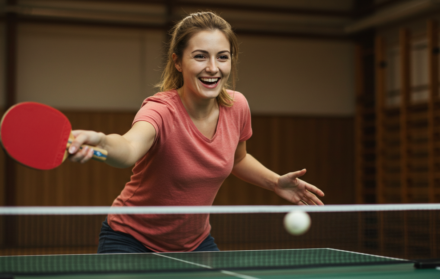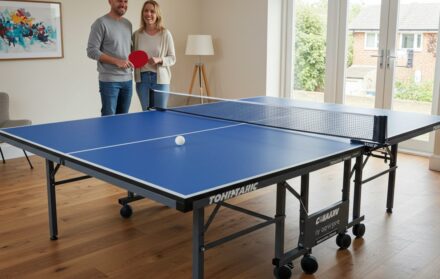
How do you play table tennis as a beginner?
If you have ever watched a fast-paced table tennis match and thought,
“I would love to learn that,”
the good news is: you absolutely can. You do not need to be an athlete or invest thousands of hours to enjoy the sport. The key is knowing how to start right.
This guide explains everything you need to know about playing table tennis as a beginner. From basic rules and equipment to core skills and practice tips, this is your all-in-one starting point to build confidence and enjoy the game.
Why Table Tennis Is a Great Sport for Beginners
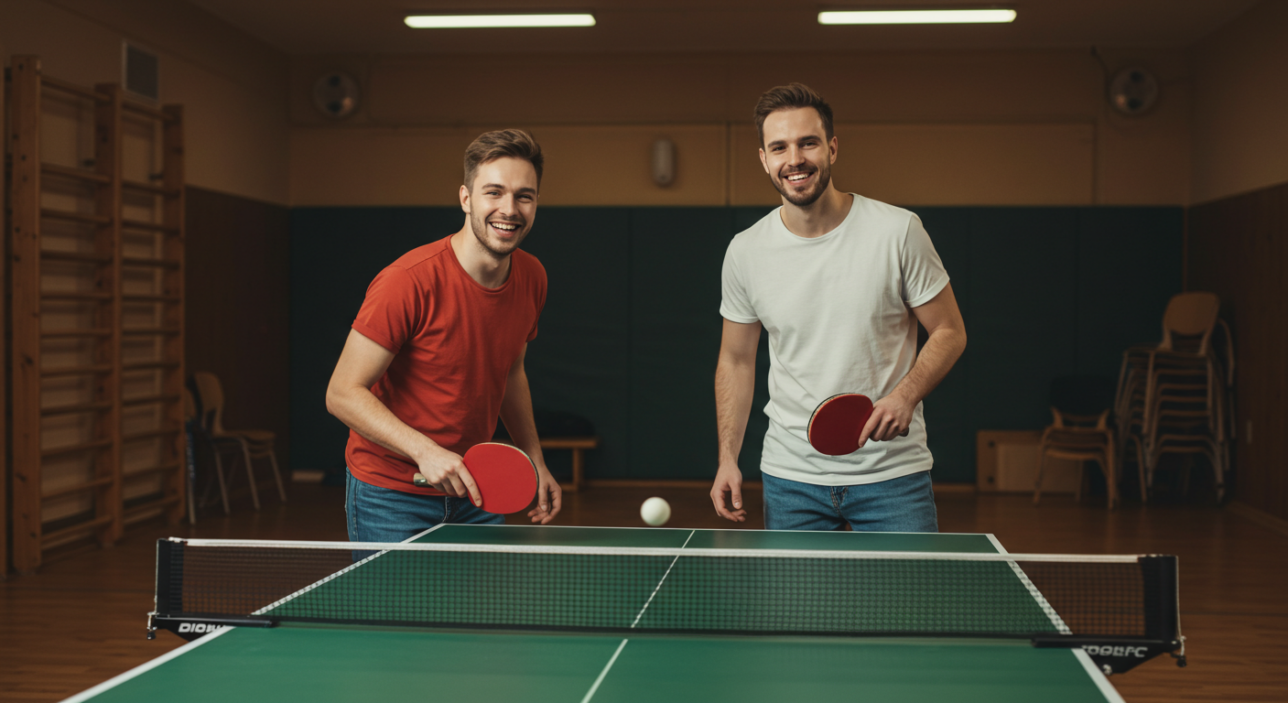
Table tennis is one of the most accessible sports in the world. You can play it indoors or outdoors, solo or with friends, and it suits all ages and fitness levels. It is also low-impact, which makes it ideal for long-term physical health.
For beginners, it offers a fun and fast learning curve. With the right approach, you can play rallies within minutes and start improving right away. You do not need extreme strength or speed. What matters more is coordination, timing, and consistency — all of which you can develop with simple practice.
What Equipment Do You Need?
You do not need a fancy setup to get started, but you do need the right gear. Having proper equipment helps you learn faster and avoid forming bad habits early.
Here is what you will need:
1. A Table Tennis Table
Look for a standard-size table that is 2.74 meters long and 1.525 meters wide. For home use, foldable or compact tables are also fine as long as the bounce is consistent.
2. A Net
Most tables come with an attachable net. Make sure it is 15.25 cm high and stretches tightly across the width of the table.
3. Racket (Also Called Bat or Paddle)
For beginners, choose a basic racket with good control. Avoid very spinny or fast rubbers until your technique improves.
4. Balls
Use 40 mm plastic balls, either white or orange. Choose a few 3-star balls if you want better durability and bounce consistency.
Understanding the Basics of Gameplay
Before you rally, you should understand the flow of the game and how points are scored.
Table tennis is played either as singles (1v1) or doubles (2v2). In both formats, players try to score points by hitting the ball over the net and onto the opponent’s side of the table. The opponent must return the ball after one bounce. If they fail, you win the point.
Each game is played to 11 points. Players must win by 2. Matches are often best of 5 or best of 7 games.
Table Tennis Rules You Should Know as a Beginner
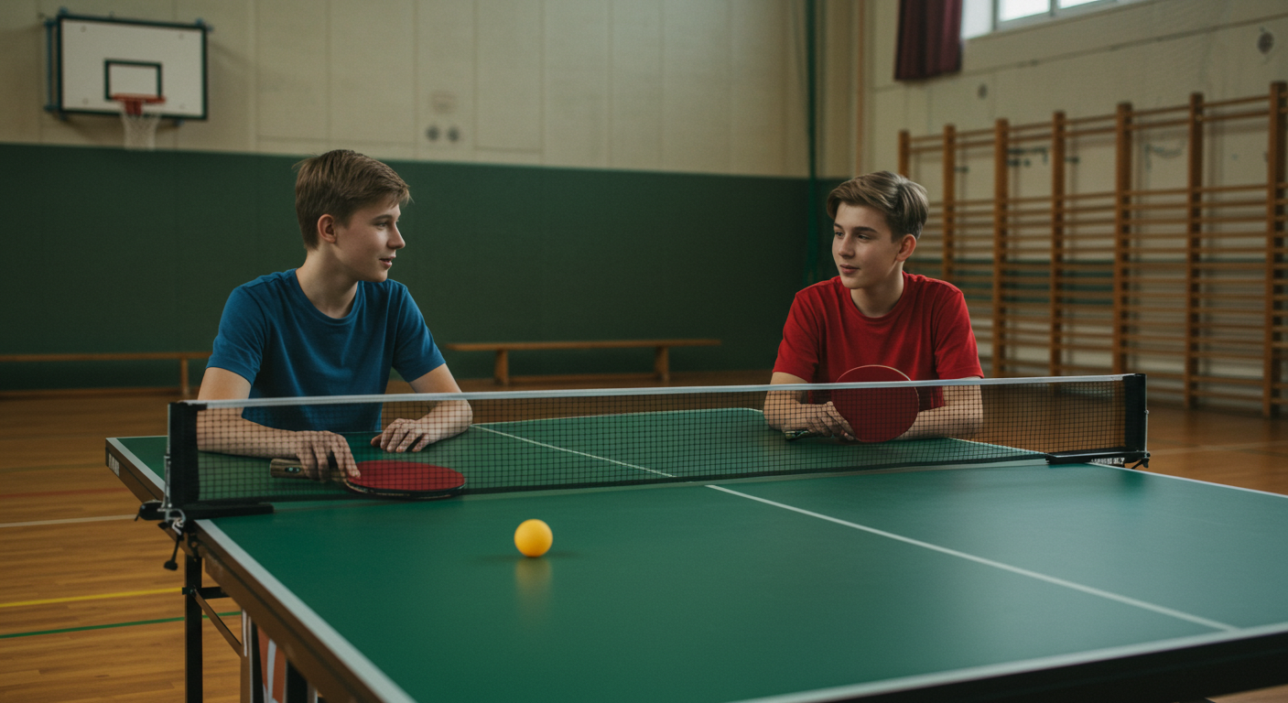
Rules help you understand how the game is played fairly. These are the main ones to remember:
-
The ball must be tossed at least 16 cm straight up when serving.
-
It must bounce once on your side, then on your opponent’s side.
-
A point is scored on every rally, whether you serve or not.
-
Players switch serve every 2 points.
-
At 10–10, serve alternates every point.
-
In doubles, the ball must be served diagonally.
Most beginners make illegal serves without knowing. Learning the correct serve early will give you an advantage as you improve.
The 4 Core Strokes You Should Practice
As a beginner, you only need to learn four strokes to start playing real games. These strokes will help you control the ball, respond to different shots, and develop consistency.
| Stroke Name | Purpose | Side Used | Shot Type | Common Scenario |
|---|---|---|---|---|
| Forehand Drive | Offensive | Forehand | Fast and flat | Opening rallies |
| Backhand Drive | Offensive | Backhand | Quick return | Responding to fast shots |
| Forehand Push | Defensive | Forehand | Spin control | Returning short backspin serves |
| Backhand Push | Defensive | Backhand | Stable return | Neutral rallies or low balls |
You can master these through regular practice. They form the core of every beginner’s skill set and prepare you for loops, smashes, and spins later on.
How to Serve as a Beginner
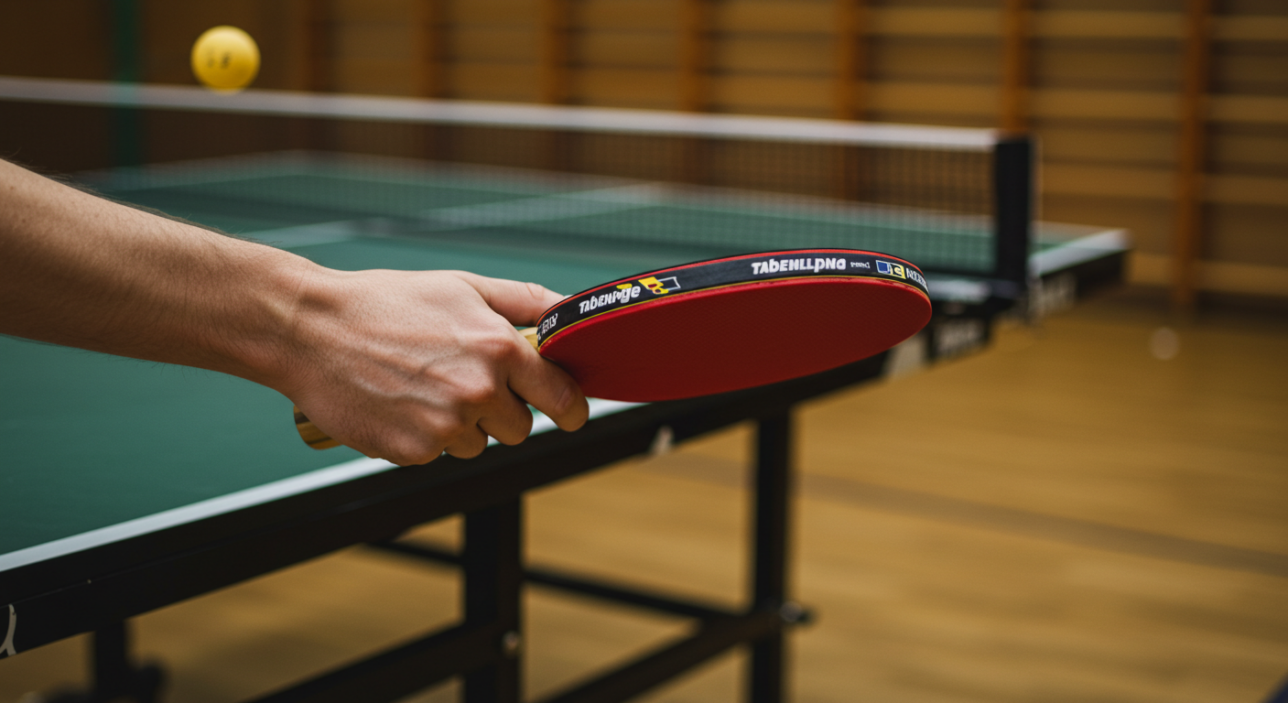
Serving gives you the first control of the rally. It is also one of the most misunderstood parts of the game.
To serve legally:
-
Hold the ball flat in your open palm.
-
Toss it straight upward at least 16 cm.
-
Hit it on the way down so it bounces once on your side, then once on your opponent’s.
-
Make sure the ball is visible to your opponent at all times.
Avoid hiding the ball with your arm or body. That is considered illegal and will cost you points in competitive settings.
Footwork and Positioning Basics
Good players are always in position. As a beginner, you want to:
-
Keep your knees slightly bent and stay light on your feet.
-
Stand at arm’s length from the table.
-
Stay centered and move side-to-side with small steps.
-
Return to ready position after each shot.
Improving your footwork early will make every stroke more reliable. Try to move to the ball rather than reaching out with your arm alone.
Common Beginner Mistakes (And How to Avoid Them)
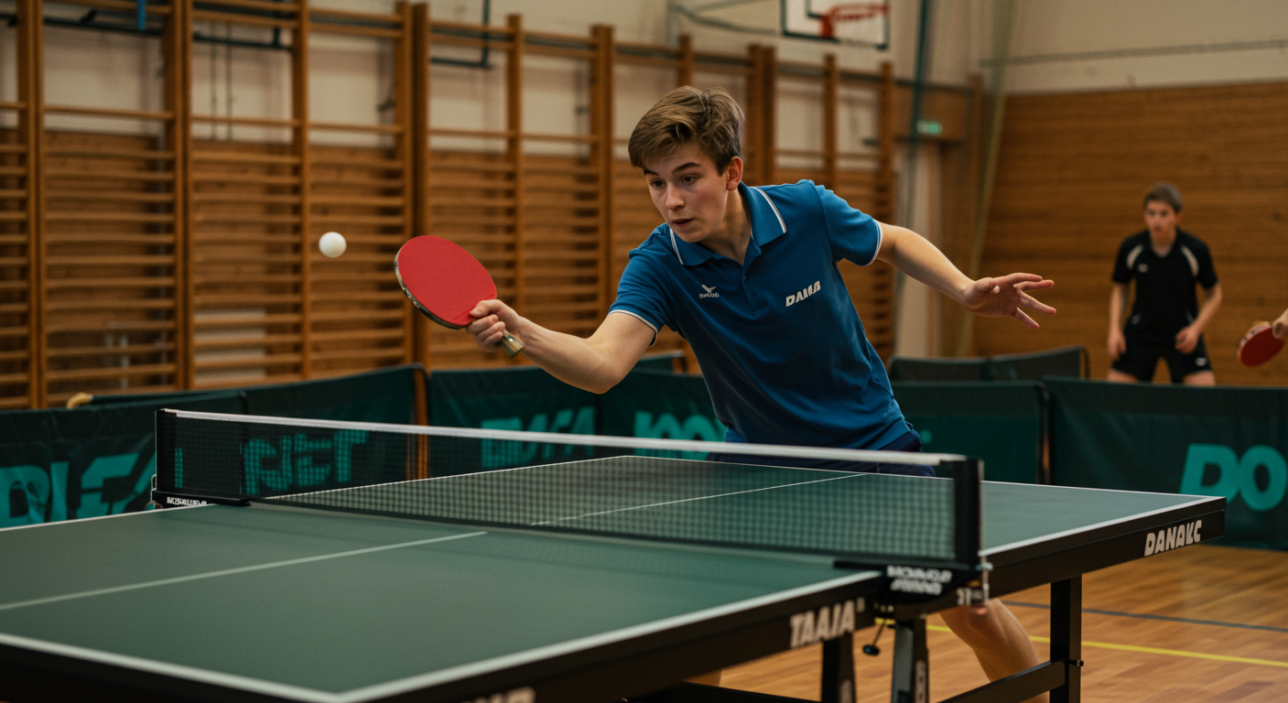
Mistakes are part of learning, but knowing the common ones can help you improve faster.
Mistake 1: Hitting too hard too soon
Many new players try to smash every ball. Focus on control first. Speed will come later.
Mistake 2: Using the wrong grip
Avoid holding the paddle like a hammer or with a stiff wrist. Use the shakehand grip and keep your fingers relaxed.
Mistake 3: Standing too close or too far
If you’re too close, you cannot react to deep balls. Too far, and you lose pressure. Stay one step away from the edge.
Mistake 4: Forgetting recovery
After you hit the ball, always return to ready position. Never admire your shot.
Mistake 5: Ignoring spin
Even beginner-level games involve some spin. Learn to recognize it by watching how the ball bounces and how your opponent moves their paddle.
Drills to Help You Improve
Repetition builds muscle memory. Here are a few simple drills to build confidence and control.
1. Forehand Drive Rally
Stand across from a partner and exchange forehand drives. Keep the pace moderate and count how many shots you can keep going.
2. Push-to-Push Rally
Practice backhand and forehand pushes by keeping the ball short over the net. Aim for consistent backspin and low bounce.
3. Serve and Return Drill
Serve legally to your partner. They push it back. You respond with a drive. Repeat and switch roles after 5 minutes.
4. One-Point Game
Play mini-games to 1 point each. This simulates match pressure and helps improve focus and serve quality.
How to Practice Without a Partner
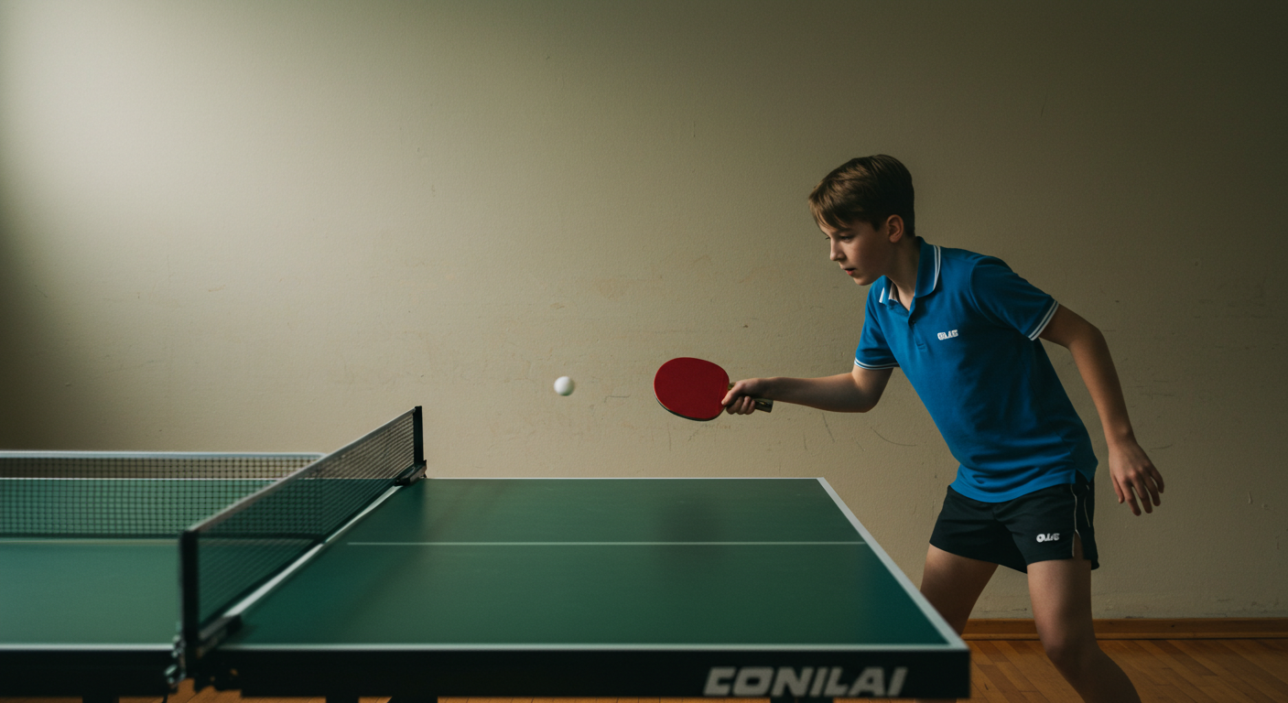
If you don’t have someone to play with, you can still make progress.
-
Use a return board or table divider to rally with yourself.
-
Practice serves by aiming for different zones.
-
Shadow practice your strokes in front of a mirror.
-
Bounce the ball on your paddle to improve touch and control.
Finding the Right Mindset as a Beginner
You will lose points. You will hit the ball into the net. That is all part of the process.
Try to focus on small wins:
-
Did you make three pushes in a row?
-
Did your last rally last five shots?
-
Did you serve legally five times in a row?
Every improvement matters. Table tennis is a skill sport. Progress is slow at first but becomes incredibly rewarding as your consistency builds.
Final Thoughts: How Do You Play Table Tennis as A Beginner?

Learning table tennis as a beginner is one of the most enjoyable ways to stay active, sharpen your reflexes, and pick up a lifelong hobby. The key is to start with structure — focus on equipment, learn the rules, and build a foundation with the four core strokes.
Be patient. Improvement takes time, but if you focus on consistency, balance, and smart habits, your skills will grow faster than you expect. Play often, reflect on what works, and enjoy the journey.
And remember: every world champion started where you are — standing at the table for the first time, learning to make one clean hit at a time.
Frequently Asked Questions
How long does it take to get good at table tennis as a beginner?
With regular practice, you can start rallying confidently within a few weeks. Most players improve significantly within 3 to 6 months of focused training.
Can I play table tennis without a coach?
Yes. Many players start on their own or with friends. A coach helps speed things up, but YouTube tutorials, drills, and self-recording can also work well for beginners.
What is the best way to hold a paddle as a beginner?
The shakehand grip is the most common and beginner-friendly. It feels like a regular handshake and gives good balance between forehand and backhand strokes.
Do I need to learn spin right away?
No. Focus on controlling your strokes and timing first. Spin becomes important later, but trying to add it too early can lead to bad habits.
Should I buy an expensive paddle?
Start with a beginner-level racket with good control. High-speed or tacky rubbers can actually make learning harder in the early stages.
